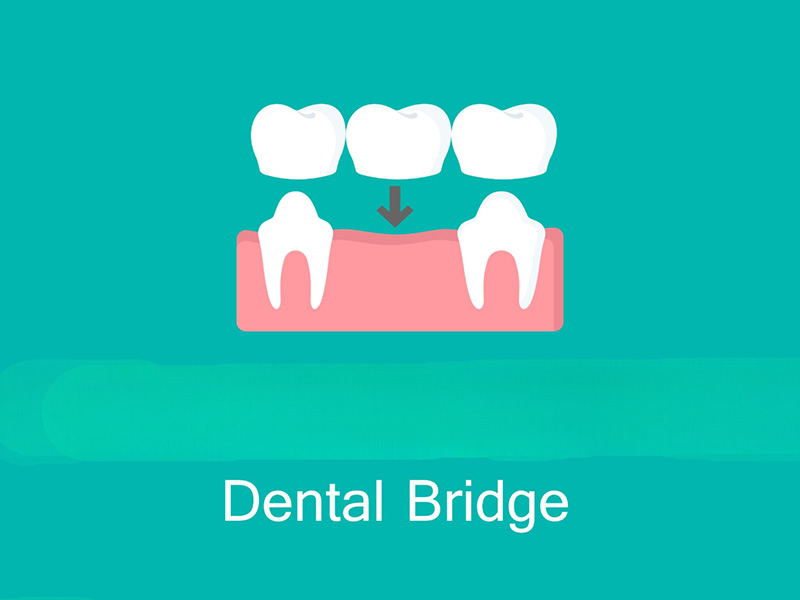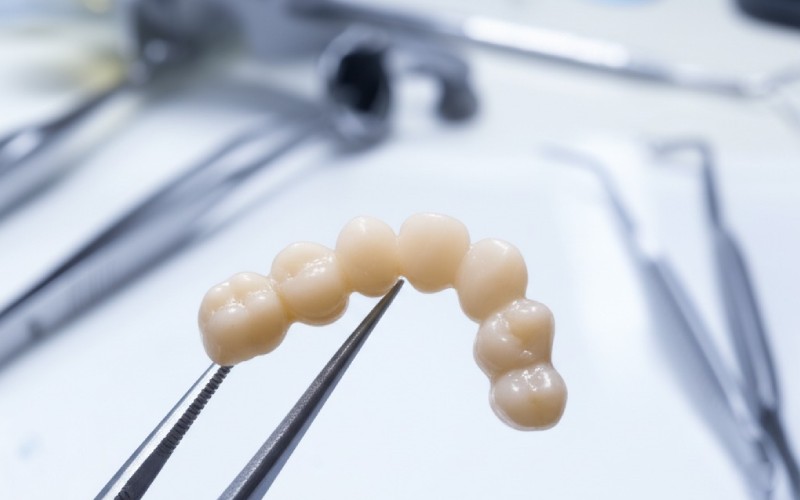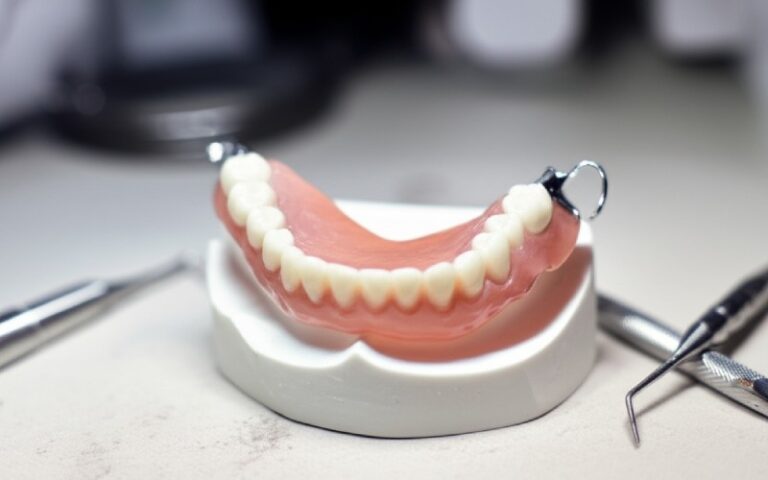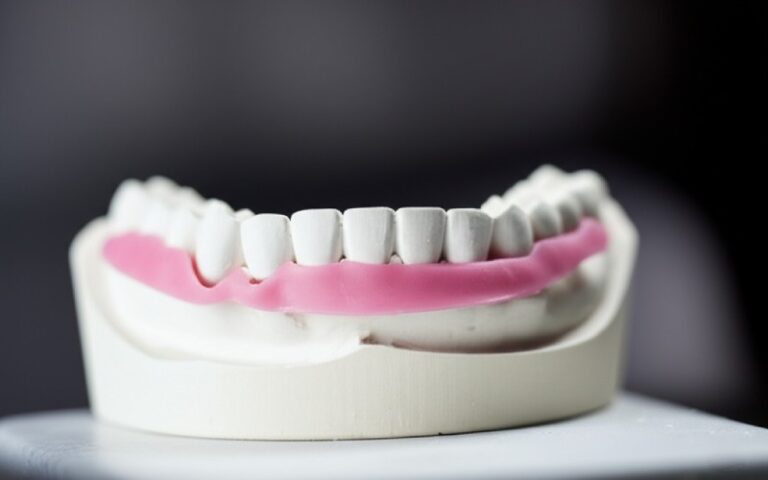
How Dental Bridges Work: Guide to Replacing Missing Teeth and Caring for Your Dental Bridge
This article is your simple, friendly guide to the world of dental bridges. We will cover everything from what a dental bridge is, how the Zahnbrücke procedure works, to the best ways to handle dental bridge maintenance. If you are considering dental bridges or just want to learn more, this guide will give you the clear answers you need. I want to help you understand how dental bridges work and how caring for your dental health can be easy.
Inhaltsübersicht
What Exactly Is a Dental Bridge?
Let me break it down for you. A dental bridge is just what it sounds like. It’s a bridge that closes the gap left by one or more missing teeth. Think of it as a fake tooth, or a set of them, held in place by its neighbors. These neighbor teeth, called abutment teeth, act like the strong pillars of a bridge. The fake tooth, called a pontic, sits in the middle, filling the space perfectly.
The main job of a dental bridge is to restore your smile and your bite. When you have missing teeth, other teeth can start to shift. This can cause bite problems and other dental issues. A dental bridge stops this from happening. It is held in place by dental crowns that are placed on top of your healthy natural teeth on either side of the gap. This creates a strong and stable dental restoration. Getting a dental bridge can make a huge difference in your overall dental health.
What Type of Dental Bridge Is Right for Me?
The most common type of dental bridge is the traditional dental bridge. This is likely what you picture in your mind. It has a fake tooth held in place by a dental crown on each side of the gap. These traditional bridges are very strong and reliable, especially for back teeth.
Another option is a cantilever bridge. This type of bridge is used when you only have a healthy tooth on one side of the gap. The cantilever bridge is attached to just one pillar tooth. A cantilever design isn’t as common, but it can be a good choice in certain situations. Then there are Maryland bonded bridges, also known as resin-bonded bridges. A Maryland dental bridge uses a metal or porcelain framework that is bonded to the back of the neighbor teeth. This Maryland dental bridge doesn’t require placing crowns on the other teeth. Finally, there are implant-supported bridges, which are held in place by dental implants instead of natural teeth. The best bridge type for you depends on your specific dental needs.

How Does the Dental Bridge Procedure Work?
The dental bridge procedure might sound complex, but it’s pretty straightforward. It usually takes two visits to your dental practice. On the first visit, the dentist prepares the teeth that will support the dental bridge. This involves shaping them so the dental crown can fit over them perfectly.
After the teeth are prepared, the dentist takes an impression. This impression is like a mold of your teeth. It is sent to a Dentallabor where your custom dental bridge will be made. You won’t leave with a gap in your mouth, though. The dentist will place a temporary bridge to protect your teeth while your permanent bridge is being crafted. This temporary bridge is very important for keeping things comfortable. Once your new dental bridge is ready, you will go back for your second visit to have it fitted and cemented into place.
What Are the Main Benefits of Dental Bridges?
So, why choose dental bridges? There are many good reasons. The primary benefits of dental bridges is their ability to make your smile look great again. Dental bridges seamlessly fill the gaps from missing teeth, which can be a huge boost to your confidence.
But the benefits of dental bridges go beyond just looks. They also help you chew food properly and speak more clearly. When you lose a tooth, it can affect how you talk. Dental bridges restore the full functionality of your dental arch. Plus, dental bridges help maintain the shape of your face. A missing tooth can cause your cheeks to look sunken over time. A dental bridge provides the support they need. Dental bridges prevent your other natural teeth from drifting out of position, which is key for long-term dental health.
Should I Choose Dental Bridges or Dental Implants?
This is a big question for many people. Both a dental bridge and Zahnimplantate are great ways to replace missing teeth. The right choice really depends on your health, your budget, and your personal preference. A dental bridge is often a faster and less invasive process. The entire dental treatment can be done in just a couple of weeks.
Dental implants, on the other hand, involve a surgical procedure to place a metal post into your jawbone. This process takes longer and can cost more. However, dental implants don’t rely on your neighboring natural teeth for support. This is a big plus because it means you don’t have to alter healthy teeth. Unlike dental implants, a dental bridge does require shaping the teeth next to the gap. Some people choose to get dental implants instead to preserve their other teeth. It is a good idea to talk to your dentist about which option is best for you.

How Do You Handle Dental Bridge Maintenance?
Once you have your new dental bridge, you need to take good care of it. Bridge maintenance is key to making sure it lasts a long time. You might think that because the teeth in the dental bridge are not real, you don’t have to worry about them. That’s a mistake. You still need to brush and floss every day to keep the supporting teeth and your gums healthy.
Cleaning under the dental bridge is very important. Food particles can get trapped there, which can lead to gum disease or decay in the supporting teeth. Your dentist will show you how to use dental floss threaders or special brushes to clean this area properly. It might take a little practice, but it will become part of your daily routine. Proper dental bridge maintenance is the secret to the longevity of your dental bridge.
Why Is Caring for Your Dental Bridge So Important?
Caring for your dental work is just as important as caring for your natural teeth. The longevity of a dental bridge depends almost entirely on how well you care for it and the health of the teeth that support it. If one of the supporting teeth gets a cavity or gum disease, the whole dental bridge can fail. This is why maintaining a rigorous dental care routine is so important.
Think of your dental bridge as an investment in your health of your dental smile. You want to protect that investment. Avoid chewing on very hard things like ice or hard candy, as this can damage the bridge. If you take good care of your dental bridge, it can last for many years, sometimes even 15 years or more. Keeping your bridge in optimal condition ensures the longevity of your dental health for years to come.
How Much Does the Cost of Dental Bridges Vary?
I know what you’re thinking. How much is this going to cost? The cost of dental bridges can be very different from person to person. The price depends on a few things. The type of dental bridge you get is a big factor. For example, traditional bridges might have a different price than maryland bonded bridges or implantatgetragene Brücken.
The material used to make the dental bridge also affects the cost. Bridges can be made from porcelain, gold, or other alloys. The number of missing teeth you need to replace will also play a role. A bridge that replaces one tooth will cost less than a bridge that replaces three teeth. Your location and your dental insurance plan will also impact the final price. It’s best to talk to your dentist to get a clear idea of the costs involved with your dental work.
What Is the Dental Bridge Placement Process Like?
Let’s walk through the dental bridge placement one more time so you know what to expect. Understanding the dental bridge procedure helps reduce any anxiety you might feel. After your first visit where your teeth are prepared and impressions are taken, you will wear a temporary bridge. This temporary bridge looks and feels much better than having a gap.
Your second visit is when the magic happens. Your dentist will remove the temporary bridge and check the fit of your new, permanent bridge. They will make sure the color matches your natural teeth and that your bite feels right. A dental bridge typically needs minor adjustments to get the fit perfect. Once you and your dentist are happy, the dental bridge is permanently cemented into place. It’s a great feeling to walk out of the office with a full, beautiful smile again. The whole process is designed to be as comfortable as possible.
Why Are Regular Dental Check-ups Crucial for My Bridge?
I can’t say this enough: regular dental check-ups are your best friend. This is true for your natural teeth and dental bridge alike. Seeing your dentist regularly allows them to check the condition of dental bridges and the health of the supporting teeth. They can spot small problems before they become big ones. These visits are essential for the lifespan of a dental bridge.
During your regular dental visits, your dentist or hygienist will perform a professional cleaning. They have special tools to clean around and under your dental bridge better than you can at home. Regular dental check-ups and professional cleanings help prevent decay and gum disease around your dental work. These appointments are a key part of your dental care plan and help ensure the durability of dental bridges. Making time for check-ups with a dental professional is a simple step that pays off in the long run.
Das Wichtigste zur Erinnerung
I hope this guide has helped you understand the world of dental bridges. They are a wonderful solution for many people with missing teeth. To wrap things up, here are the most important points to keep in mind:
- A dental bridge fills the gap from a missing tooth and is supported by neighboring teeth or dental implants.
- There are different types, including traditional dental, cantilever, and Maryland bridges. The best one depends on your needs.
- The procedure usually takes two visits. You get a temporary bridge while your permanent one is made at a dental laboratory.
- Dental bridges offer many benefits, like restoring your smile, improving your bite, and preventing other teeth from shifting.
- Maintenance of dental bridges is crucial. You must brush daily and clean under the bridge to protect your investment.
- Regular dental check-ups and professional cleanings are vital for the lifespan of dental bridges. They help keep your supporting teeth and gums healthy.




